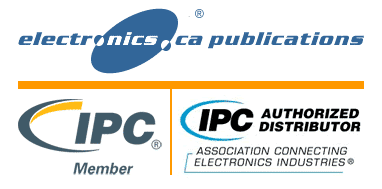Nanotechnology and nanomaterials are key enablers for a whole new generation of products and processes, some of which have come onto the market in 2014 in sectors such as consumer electronics.
 The Nanotechnology Industry Review and Prospects Report is a comprehensive guide to materials, markets and products in nanotech over the past 12 months and future developments. This publication details leading developments within the industry during this period.
The Nanotechnology Industry Review and Prospects Report is a comprehensive guide to materials, markets and products in nanotech over the past 12 months and future developments. This publication details leading developments within the industry during this period.
2014 witnessed numerous major advances enabled by nanomaterials in consumer electronics (quantum dots), medicine and coatings technology. The number of nanocellulose and graphene producers and applications developers has grown significantly. Other 2D nanomaterials are now the focus of widespread research.
The Nanotechnology Industry Review and Prospects Report focuses on the leading nanomaterials under development, with coverage on carbon nanotubes, graphene, quantum dots, nanocellulose and other key markets such as titanium dioxide nanoparticles and nanosilica. There are contributions from leading nanotech companies in the materials and coatings sectors, alliowing readers a unique market insight into these exceptional materials.
All the key breakthroughs and business developments in 2014 in graphene, carbon nanotubes, nanomedicine, nanocellulose, nanocoatings, nanomaterials regulation, nanowires, quantum dots and energy are covered. This publication provides a comprehensive review of the state of the nanotech sector at present, it’s development, and future prospects. Strategic analysis of the key global markets nanotech will impact is the core theme.
Key Nanomaterials Markets in 2015
- Nanomaterials in the Li-ion battery market
- The graphene market
- Keys to success in graphene
- Graphene in healthcare
- Nanomaterials in 3D printing
- Nanomaterials in Displays
- Nanomaterials in Filtration
- Nanomaterials in Energy
- The Nanocoatings Market
- Anti-fingerprint nanocoatings
- Nanocoatings in the automotive industry
- Nanocoatings in aerospace and aviation
- Nanocoatings in construction and exterior protection
- Nanocoatings in consumer electronics
- Nanocoatings in sanitary and cleaning 54 Nanocoatings in the oil and gas sectors
- Nanocoatings in the marine industry
- Nanocoatings in the textile industry
- Medical nanocoatings
- Waterproof nanocoatings
- Quantum Dots in Displays
Key Nanomaterials in 2015
- Self-Healing nanocoatings
- Gold nanoparticles
- The Carbon nanotubes market
- Single-walled carbon nanotubes prospects
- Fullerenes
- Nanosilver
- Nanowires in electronics
- Nanozirconia producers
- Titanium dioxide nanoparticles
- Nanoparticle inks for printed electroncs
- Plasma nanocoatings
- Nanosilica
- Cellulose nanocrystals
Key Industry Developments in the last 12 months
- Graphene industry developments
- Nanomedicine industry developments
- Nanomaterials regulation
- Carbon nanotubes industry developments
- Nanowires industry developments
- Quantum dots industry developments
- Nanocoatings industry developments
- Nanoenergy industry developments
- Nanocellulose industry developments
Learn more about nanotechnology and nanomaterials market and publications that provide informed perspective and relevant analysis of emergent technologies.
Key Nano-technologies and Markets in 2015 and Beyond








